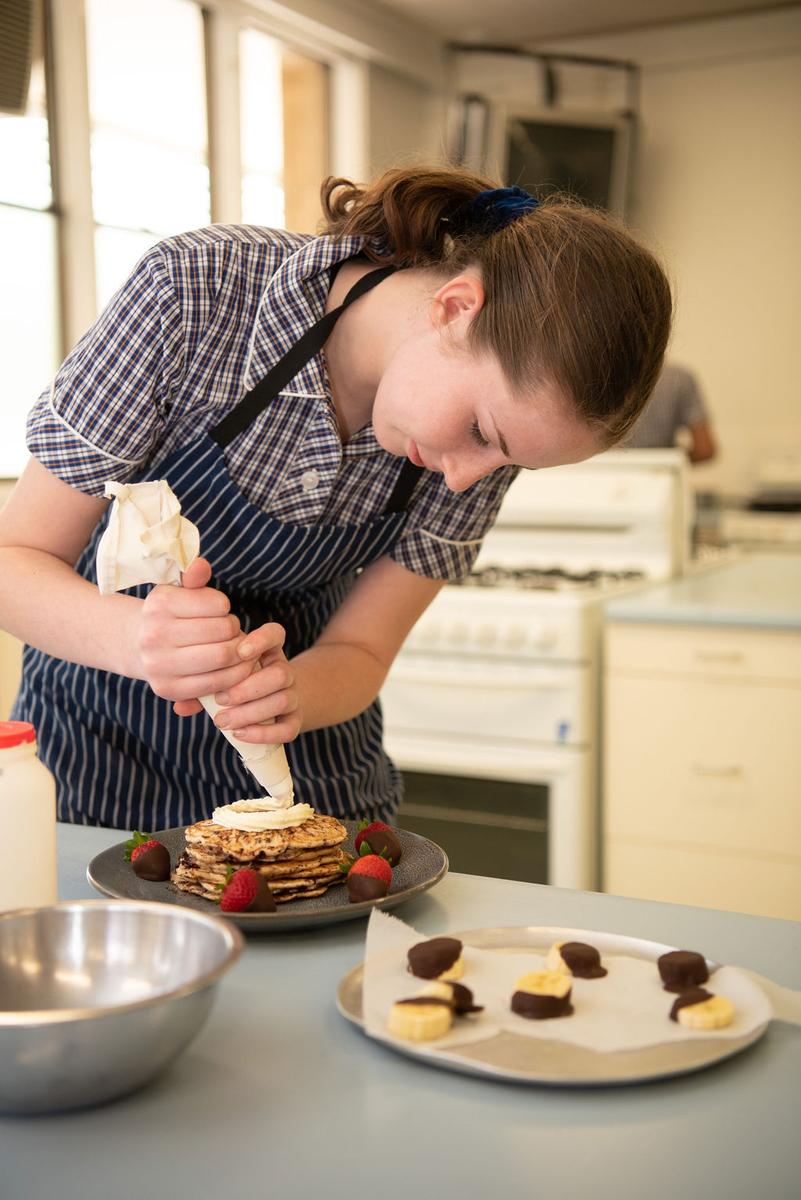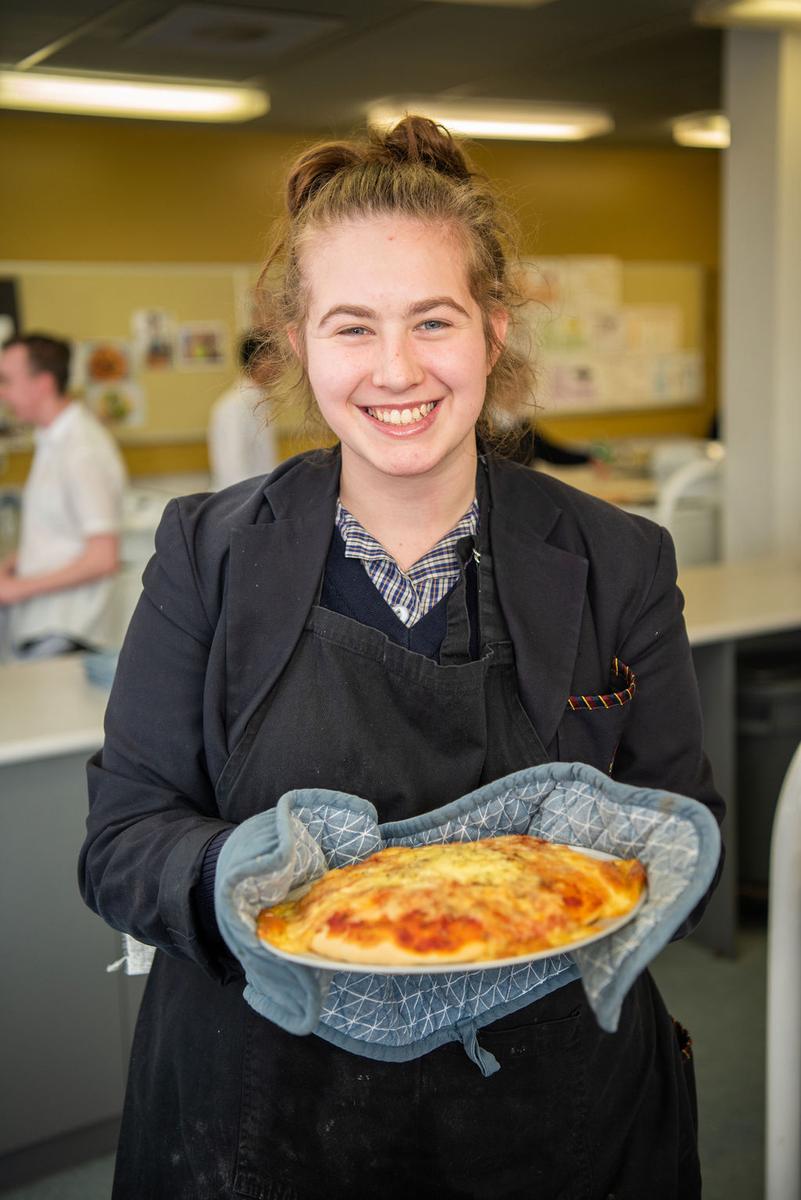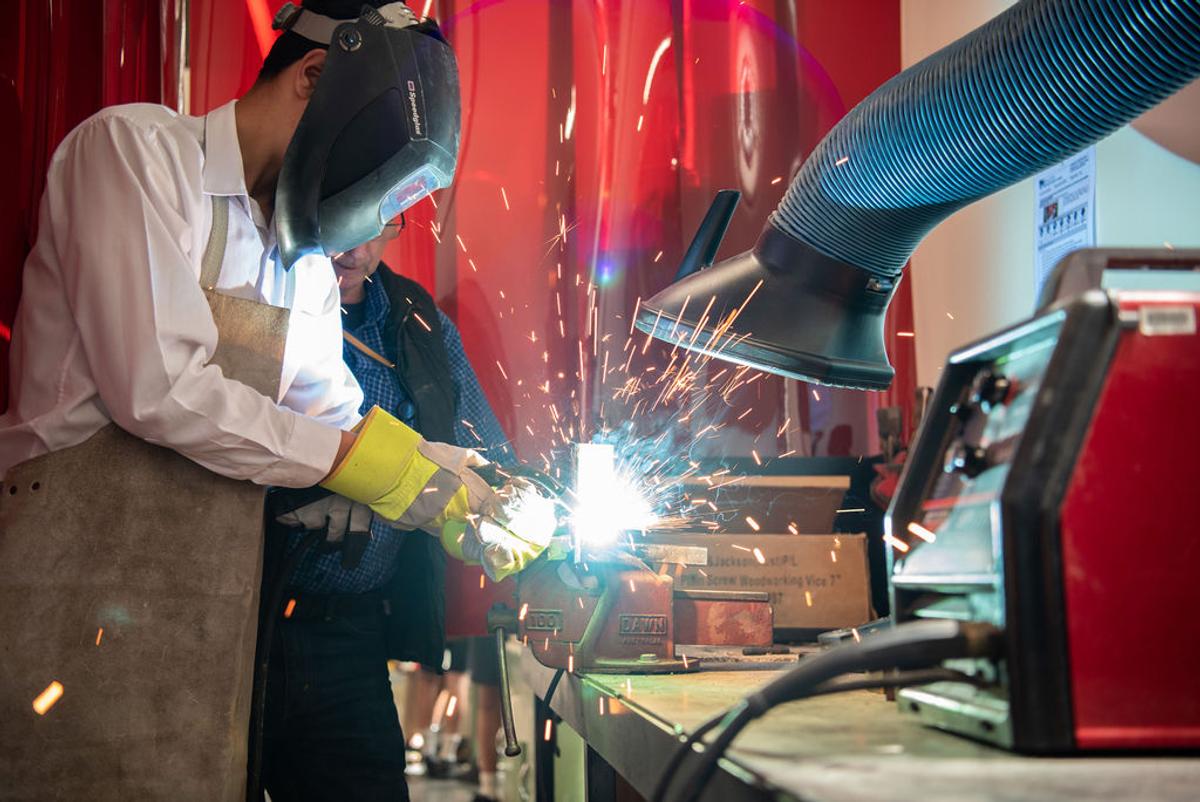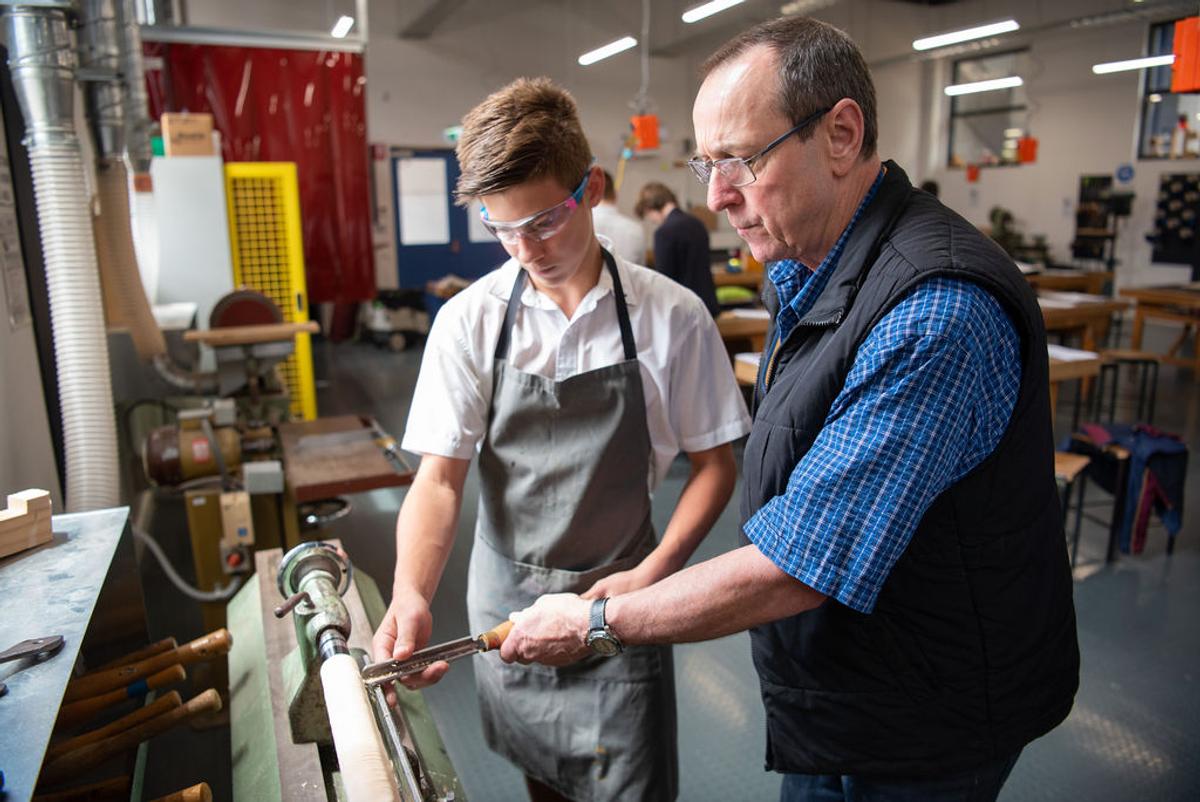Year 9 Technologies
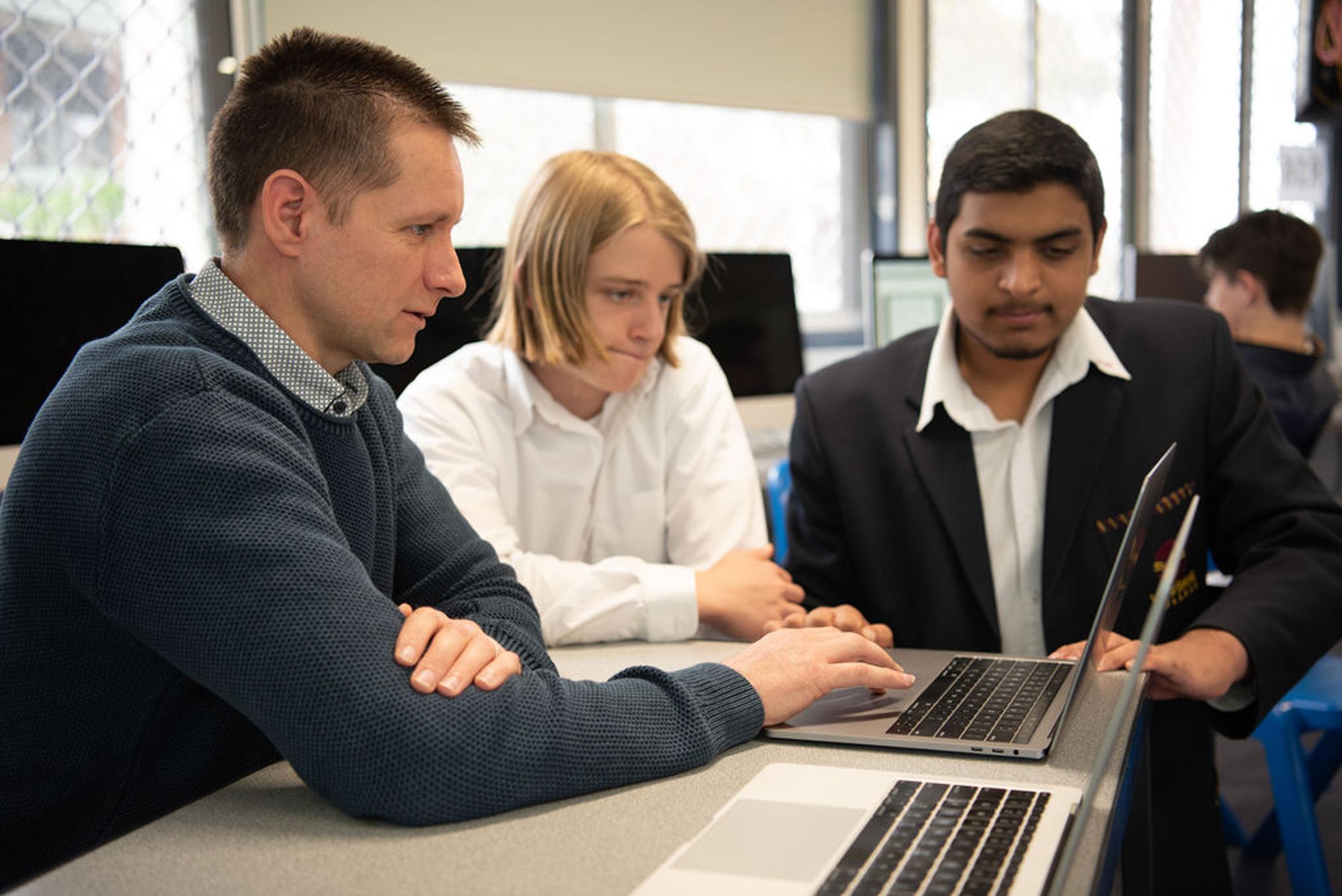
Technologies Elective Subjects (Semester Based) |
|---|
Designing and Engineering for a Better Future |
Food Whiz |
Game Programming |
Micro Computing |
Product, Design and Technology (Wood/Metals/Plastic) |
Textiles - Fashion |
Web Design and Development |
These subjects may be subject to a materials charge. Please refer to the Parent Payment Policy on the College Website.
Designing and Engineering for a Better Future
Do you want to create a better world? In this unit, students will design and make projects with movable parts or electronics. This unit is aimed at introducing students to electrical and mechanical systems through the mediums of traditional and emerging technologies. Students will develop skills in designing using 3D Computer Aided Design software. Students will develop an understanding of the system engineering process.
Students will be able to:
Design using Computer Aided Design software
Design and create using 3D Printers
Design and create using the Laser Cutter/Engraver
Create solutions to real-world problems
Make small projects with moving or lighting up components
Use creativity, critical thinking, and problem solving to find solutions for better futures
Develop project reports including budgeting for their products
Food Whiz
The Year 9 Kitchen Whiz elective allows students to identify and research current food trends and use various processing equipment and techniques to produce a variety of creative starters, mains and sweet treats, utilising fresh and seasonal produce. Students will be provided with the opportunity to investigate and make judgements on how the principles of food safety, preservation, preparation, presentation and sensory perceptions influence the creation of food solutions for healthy eating. They will also study and apply the principles of ethical and sustainable production and marketing of food.
Investigating, Generating, Producing and Evaluating
Students will learn to:
- Critique needs or opportunities to develop design briefs and investigate and select a range of ingredients, tools and equipment to develop design ideas.
- Apply design thinking, creativity, innovation and enterprise skills to develop, modify and communicate food design.
- Work flexibly and use appropriate processes to make designed solutions
- Evaluate design ideas, processes and solutions against comprehensive criteria for success recognising the need for sustainability.
Game Programming
This subject aims to introduce students to game design and game programming through the use of various game development platforms. Students will be introduced to component-based object-oriented programming by coding a series of 2D game modules incorporating game pitch/concept, game logic, graphics and audio. Students will also consider visual design elements in relation to user input and user interfaces. Students will have the opportunity to either work individually or collaboratively in small teams to design and develop their own 2D games. A formal technology design process is followed such as planning gameplay, designing program logic which may include incorporating game physics and exploring a range of game development elements such as designing game scenes and writing code to manipulate game elements, sound and graphics. Students will hone their problem-solving and collaboration skills by working with classmates to test the functionality of games and debug errors in their program code.
Digital Systems
Students will learn to:
- Investigate the role of gaming consoles, pc hardware and software in the gaming industry.
Data and information
Students will learn to:
- Manage game assets (audio, images, video) and package file directories including the handling of code scripts, graphics and sound files.
- Design and develop data structures to store and manipulate data (such as player score or player health).
Creating Digital Solutions
Students will learn to:
- Prepare a game design document – incorporating design considerations such as accessibility, user interfaces, level design and functional and non-functional requirements.
- Design and develop an effective user interface conveying information such as player scores or inventory items.
- Apply computational thinking to design algorithms aimed at manipulating objects within the game environment in response to player input.
- Develop programs by writing scripts in prescribed programming languages within the selected games development platforms.
- Test and debug their game and evaluate their solution in response to the project goals stated in their game design document.
Micro Computing
Students will take their first step into the exciting field of embedded systems and robotics with this elective subject focused on the design and development of digital systems using a variety of micro-computing technologies – including Arduino Microcontrollers, and BBC Microbits and robotics platforms.
Working both individually and collaboratively, students will construct and program a series of electronic circuits using the programming language that is relevant to each micro-computing platform. Using electronic components such as sensors and servos, students will learn how to program computing technologies to interact with the real world. Finally, using the micro-computing technologies available, students will apply their understanding in the creation of a student-directed project. This will involve the design and development of a micro-computing digital solution that functions to solve a student-identified real-world problem or opportunity.
Digital Systems
Students will learn to:
- Investigate the role of hardware and software in managing and controlling the movement of data in digital systems.
Creating Digital Solutions
Students will learn to:
- Identify real-world problems and develop micro-computing digital solutions
- Design the user experience of a digital system, considering criteria including functionality, accessibility, usability and aesthetics.
- Design algorithms that are represented diagrammatically and in structured English
- Use a variety of programming languages and apply algorithms in developing programs to operate electronic circuits using micro-computing platforms.
- Critically evaluate how well student-developed solutions and existing information systems and policies take account of future risks and sustainability and provide opportunities for innovation.
Product, Design and Technology (Wood/Metal/Plastic)
In this subject area, students learn about many types of resistant and other materials and learn to work with increasingly complex equipment and technologies to produce projects that are meaningful and fulfil a particular need.
Students will investigate and make judgments on how the characteristics and properties of materials, systems, components, tools and equipment can be combined to create designed solutions.
Product, Design and Technology
Students will:
- Critique the design of an existing product to identify environmental consequences of material selection
- Justify decisions when selecting from a broad range of technologies − materials, systems, components, tools and equipment, for example selecting low-emission paints and locally sourced materials
- Analyse and explain the ways in which the properties and characteristics of materials have been considered in the design of a product with specific requirements such as reduced weight to reduce transport costs
- Investigate emerging materials and their impact on design decisions
- Plan and manage production tasks individually and collaboratively
- Identify sustainability issues associated with the design and production of products.
Textiles - Fashion
This subject aims to introduce students to garment construction and to explore a variety of techniques and materials. Students will design and create original projects such as boxer shorts or pyjamas, based on their own individual design brief. At this level, there is an emphasis on individual expression of ideas and creativity, as well as ethical and sustainable use of materials. Students develop their own design brief, and in response, research and develop a range of design ideas. They investigate fashion trends and properties of materials, as well as produce and evaluate their finished designs. Students are expected to observe safety procedures and develop the ability to work independently and cooperatively. This course creates a pathway to Year 10 Project Runway.
Creating Designed Solutions
Students will:
- Investigate current fashion trends. They will develop an individual design brief and select appropriate materials, tools and equipment in order to develop design ideas.
- Design a range of fashion garments based on their design brief.
- Produce a finished garment using appropriate technologies and processes.
- Evaluate their finished garment against comprehensive criteria for success recognising the need for sustainability.
- Plan and Manage projects individually taking into consideration time, cost, risk and production processes.
Web Design and Development
Students will gain an understanding of the interdependence of information systems through an investigation of the core technologies of the World Wide Web, including hardware components, protocols and key development languages including using HTML5, Cascading Stylesheets (CSS) and JavaScript. Working both individually and collaboratively, students will apply each stage of web development – including requirements analysis, visual design, development and evaluation – to the creation of interactive multimedia websites, which will reflect students’ own particular areas of interest. Students will gain an understanding of key programming concepts as they design algorithms to embed scripted functionality, such as animation, validation and interactivity, within their web development projects.
Data and information
Students will learn to:
- Investigate how data and information are created and shared through online media.
- Work collaboratively to create and communicate ideas and information online, while actively taking safety and social contexts including digital citizenship into account.
Creating Digital Solutions
Students will learn to:
- Identify real-world problems and creatively explore digital solutions
- Design the user experience of a digital system, considering criteria including functionality, accessibility, usability and aesthetics
- Design algorithms that are represented diagrammatically and in structured English
- Use a web programming language to develop and modify programs with user interfaces that make decisions and repeat actions
- Critically evaluate how well student-developed solutions and existing information systems and policies take account of future risks and sustainability and provide opportunities for innovation
